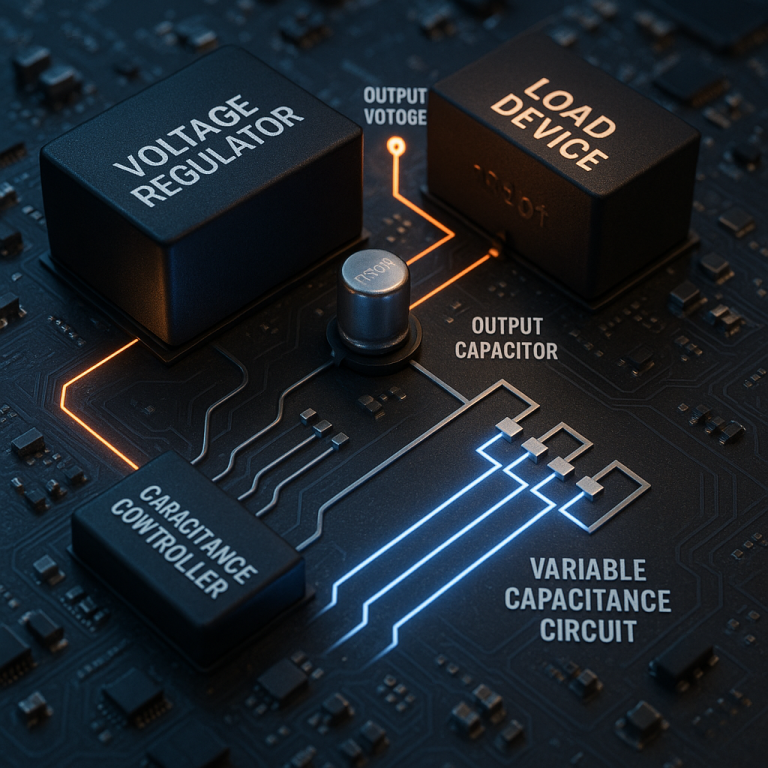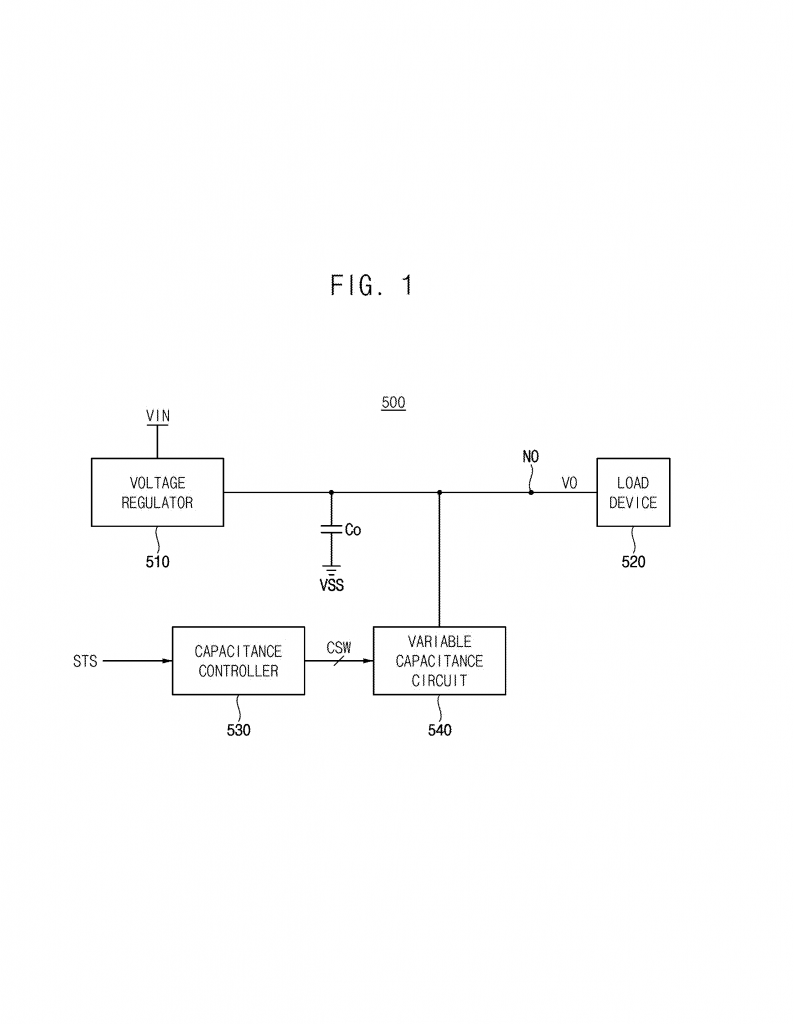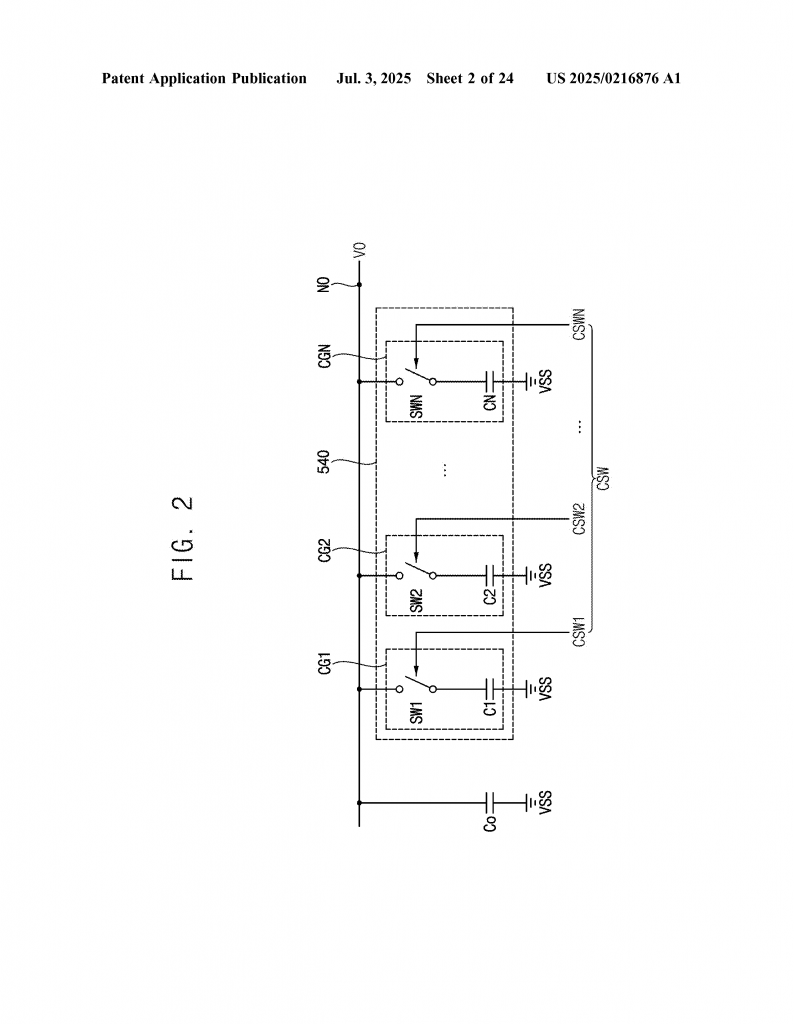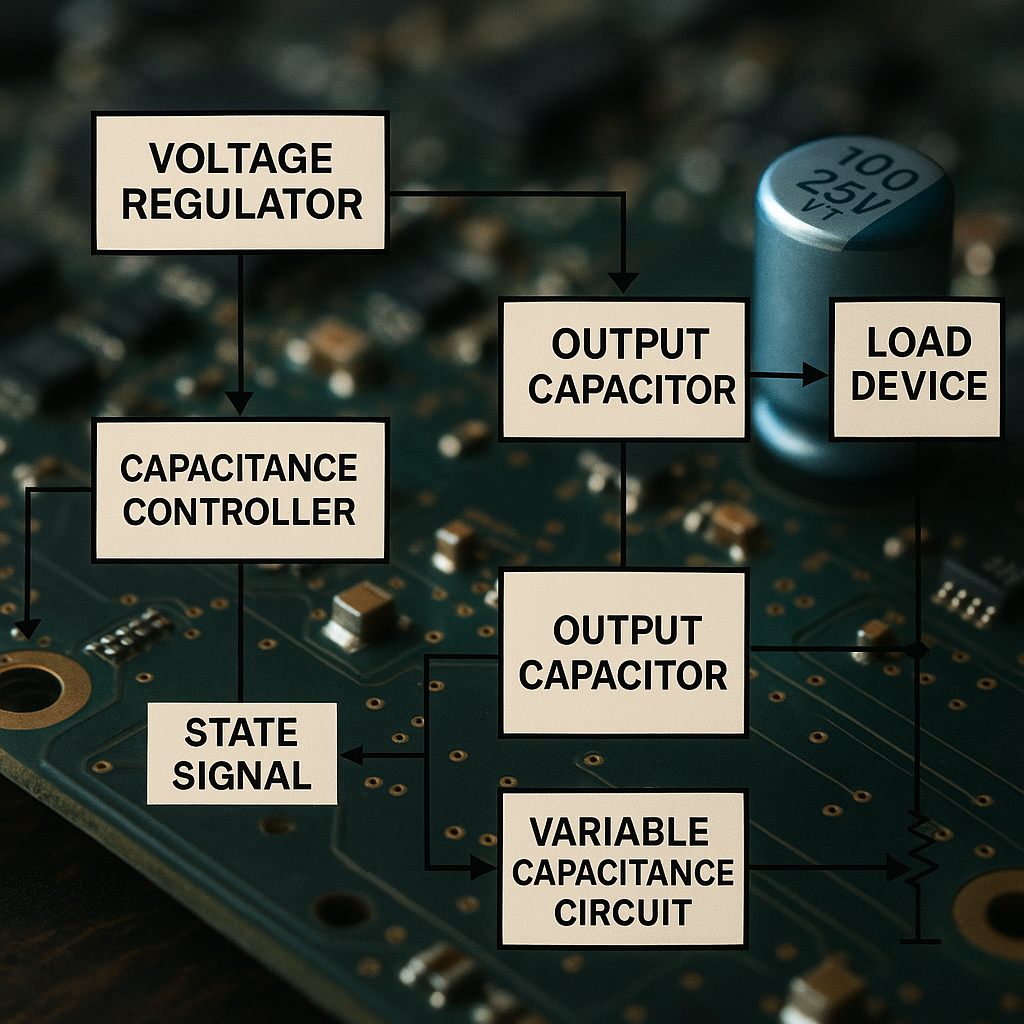Invented by Kim; Jihong, Kim; Minseok, Yoon; Jeonghoon

Electronics keep getting smaller and smarter, but making sure they work smoothly is not always simple. One of the biggest problems is keeping the power steady, especially as devices get busier or hotter. Today, we are going to break down a patent application that tackles this problem with a clever way to control the output capacitance in real time. This article will walk you through the reasons behind this invention, what came before it, and how this new idea works in practice.
Background and Market Context
Every modern electronic device, from your smartwatch to your computer or car, depends on a stable power supply to work correctly. The power is managed by something called a voltage regulator. The voltage regulator takes in power, evens it out, and sends it to all the parts of the device that need it. If this output is bumpy or unstable, the device can slow down, crash, or even break.
Many of today’s most important devices use storage technology, like SSDs (solid-state drives), to hold your photos, apps, and files. These storage devices are especially sensitive to changes in power. If the power jumps around too much, you can lose data, or the storage itself can get damaged. This is becoming a bigger issue as devices get smaller and more powerful, and as we ask them to do more things at once.
Traditionally, designers tried to solve these power problems by adding large capacitors at the output of the voltage regulator. A capacitor is like a tiny bucket that can quickly soak up or release energy. The bigger the bucket, the smoother the power. But there’s a catch: big capacitors take up space, cost money, and can cause big surges of current when the device first turns on. That can stress the rest of the system and even trip safety circuits that are supposed to keep things from overheating or shorting out.
This is especially true in storage devices, where the demand for power can jump up and down quickly depending on what the device is doing. If you are reading or writing a lot of data at once, or if the device is getting hot, the voltage regulator has to work harder to keep the output smooth. Old solutions using only fixed capacitors often can’t keep up, and making the fixed capacitor even larger just leads to other problems.
As electronic devices have moved into more and more parts of our lives—from phones and tablets to cars and smart home gadgets—the need for better, smarter power control has only grown. Companies are looking for ways to make devices faster, safer, and more reliable, all while using less space and power. That’s where this new patent application comes in: it introduces a way to adaptively change how much capacitance is at the output of the voltage regulator, depending on what the device is doing right now.

Scientific Rationale and Prior Art
To understand why this invention is important, let’s look at how things have been handled until now, and why those old methods are running out of steam.
In a typical electronic device, a voltage regulator keeps the output voltage steady by using components like inductors and capacitors. The capacitor at the output smooths out quick changes in voltage—think of it as a shock absorber for electrical bumps. The most common way to get a smoother output is to use a bigger capacitor. But this is not always the best solution. Here’s why:
First, big capacitors are physically large. In tiny devices like phones or wearables, space is precious. Second, they can be expensive, especially if you use high-quality types like MLCCs (multi-layer ceramic capacitors). Third, when you turn on the device, a large capacitor can pull a huge amount of current all at once. That can make safety circuits think something bad is happening, and shut the device down or even damage parts of the circuit.
Some engineers have tried to use a mix of different types of capacitors—some big, some small, some fast, some slow—to get the best of all worlds. Others have tried to design smarter voltage regulators that can react faster to changes. But these solutions still have problems. They can be hard to design, expensive, or just not good enough when devices are really working hard or heating up.
What’s missing from most current designs is the ability to change the output capacitance on the fly, depending on what is happening inside the device. For example, if the device is idle and cool, you only need a small capacitance. But if it suddenly gets busy or hot, you need more capacitance to keep the voltage stable. No matter how good your fixed design is, it can’t be perfect for all situations.
There have been some attempts to build variable capacitors, for example, using analog switches to add or remove capacitors from the circuit. But these solutions are often clunky, slow, or not precise enough. They also tend not to look at all the possible states of the device—like how many commands are waiting in a storage queue, or how much the output voltage is actually rippling in real time.
This patent application improves on all of these old ideas by combining a fixed capacitor with a smart, digital-controlled group of extra capacitors that can be switched in or out as needed. The key is that the control system looks at what the device is doing—temperature, workload, power-on sequence, or actual voltage ripple—and adjusts the capacitance accordingly. This makes the system more efficient, reliable, and adaptable than anything that came before it.

Invention Description and Key Innovations
The heart of this invention is a system that can dynamically change the output capacitance of a voltage regulator based on real-world conditions inside an electronic device.
Let’s break it down into its main building blocks:
1. Voltage Regulator and Fixed Output Capacitor
The voltage regulator is the part that takes an input voltage and turns it into a steady output voltage. A fixed capacitor is always connected to the output, providing a base level of smoothing. This is similar to what’s found in almost every electronic device today.
2. Load Device
This is whatever is being powered. In a storage device, for example, the load might be a memory chip and its controller. The load device is sensitive to power fluctuations, especially when it is busy or hot.
3. Variable Capacitance Circuit
Here’s where things get new. The system has a group of extra capacitors that are not always connected. Each capacitor (or group of capacitors) is connected to the output through a switch. By turning these switches on or off, the system can add or take away capacitance as needed. Think of it like adding extra shock absorbers only when you hit a bumpy road.
4. Capacitance Controller

This is the brain of the system. It watches for signals that tell it what’s happening inside the device. These signals might include:
– Temperature: If the device starts getting hot, that can mean the circuits are working harder and power needs to be steadier. The controller can add more capacitance when the temperature rises.
– Command Queue State: In a storage device, there’s a queue of commands waiting to be processed. If the queue gets full, that means lots of activity and likely more power fluctuations. The system can add more capacitance as the queue fills up.
– Power-On Sequence: When you first turn on a device, power surges can be a problem. The controller can add capacitance little by little, rather than all at once, to avoid big surges.
– Voltage Ripple: The system can actually measure how bumpy the voltage is in real time. If it sees a lot of ripple, it adds more capacitance to smooth things out.
How It Works in Practice
Suppose you turn on your device. The controller senses that power is just coming up, so rather than connecting all the extra capacitors at once (which could cause a surge), it connects them one at a time. This keeps everything smooth and avoids triggering any protection circuits.
Now, let’s say you start transferring a big file to your SSD. The controller notices the command queue is filling up, which means lots of read and write activity. It responds by adding more capacitance, so the voltage stays stable and the storage can work quickly and reliably.
If the device starts to overheat, maybe because you’re doing a long, heavy task, the controller sees the temperature rising and once again adds more capacitance. This helps the voltage regulator keep up, even as the electronics are under stress.
Or, if the controller directly measures that the output voltage is getting bumpy, it adds more capacitance right away. When things calm down—maybe the queue empties, the device cools off, or the voltage ripple drops—the controller can remove some of the extra capacitance, saving power and reducing stress on the system.
Technical Details and Clever Features
The system is built using groups of capacitors, each with its own switch (often a transistor). The controller can turn these switches on or off one by one, adding or removing capacitance in steps. The switches can be designed as regular transistors or as “diode-coupled” transistors, which can pre-charge the capacitor to the right voltage before it is connected. This avoids sudden jumps in current and makes the system even smoother.
The control logic can use digital signals—on or off, high or low—to make switching decisions fast and reliable. It can also use “hysteresis,” which means it doesn’t flip the capacitors on and off too quickly if the signals are bouncing around near a threshold. This stops the system from chattering and keeps things steady.
The controller can implement its logic in hardware, software, or a mix of both. That makes it easy to add to all kinds of devices, from simple gadgets to complex computers.
Why This Matters
This invention gives device makers a way to make their products faster, safer, and more reliable. Storage devices can handle big workloads without losing data. Phones and tablets can run cooler and last longer. Even cars and servers, which need to be super reliable, can benefit from this adaptive approach.
Because the system only adds extra capacitance when it’s really needed, it can save space, money, and power. And since it avoids big surges at power-on, it protects the other parts of the device from damage. This is a big step forward compared to old-fashioned fixed-capacitor designs.
Conclusion
As electronics get more powerful and packed with features, keeping power steady becomes both more important and more difficult. The system described in this patent application is a simple but powerful idea: use a smart controller to add or remove extra capacitance at the output of a voltage regulator, depending on exactly what the device needs in real time. By watching signals like temperature, workload, and actual voltage ripple, the device can react quickly to changing conditions, keeping things running smoothly without wasting space or power.
This approach not only solves old problems with fixed capacitors, but also opens the door to even smarter, more efficient, and more reliable electronics in the future. As the world moves toward smaller, more connected, and more demanding devices, solutions like this will be key to making sure our technology works the way we expect, every time we turn it on.
Click here https://ppubs.uspto.gov/pubwebapp/ and search 20250216876.
